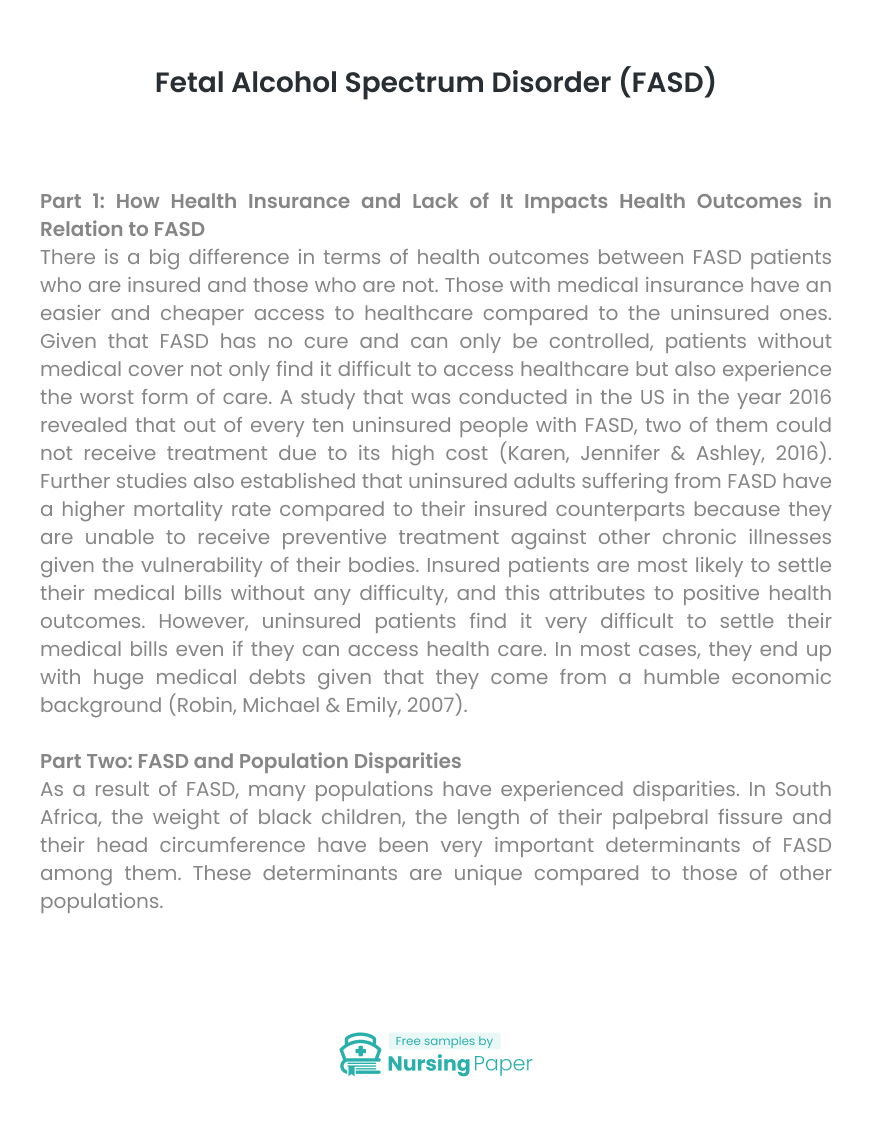1. Duimstra C, Johnson D, Kutsch C, et al. (1993). A fetal alcohol syndrome surveillance pilot project in American Indian communities in the Northern Plains. Pub Health Rep. 108(2), 225–229.
2. Pollitz K, Tolbert J, and Semanskee A. (2016). Survey of Health Insurance Marketplace Assister Programs and Brokers. Retrieved from <https://www.kff.org/health-reform/report/2016-survey-of-health-insurance-marketplace-assister-programs-and-brokers/>
3. May PA, Gossage JP, Marais AS, et al. (2008). Maternal risk factors for fetal alcohol syndrome and partial fetal alcohol syndrome in South Africa: A third study. Alcoholism: Clinical and Experimental Research. 32(5), 738–753.
4. Cohen R. A., Martinez M. E., and Zammitti E. P. (2007). Health Insurance Coverage: Early Release of Estimates from the National Health Interview Survey, January – March 2017. Retrieved from < https://www.cdc.gov/nchs/data/nhis/earlyrelease/insur201708.pdf>
5. Viljoen DL, Croxford J, Gossage JP, et al. (2002). Characteristics of mothers of children with fetal alcohol syndrome in the Western Cape Province of South Africa: A case-control study. Journal of Studies on Alcohol. 63:6–17.
6. Viljoen DL, Gossage JP, Adnams CM, et al. (2005). Fetal alcohol syndrome in a South African community: a second study of a very high prevalence area. J Stud Alcohol. 66(5), 593–604.

The download will start shortly.



 Subject:
Subject:
 Number of pages: 3
Number of pages: 3